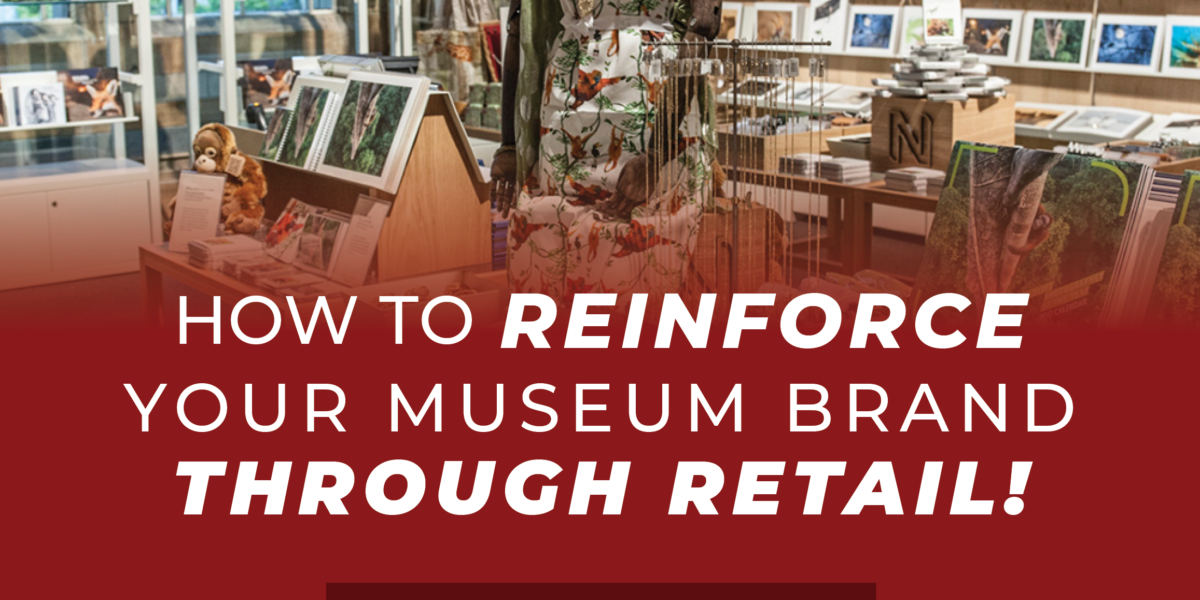To reinforce your museum brand through retail, consider the following pro tips to objectively analyze your museum store’s strengths and weaknesses.
- When the museum visitors walk through the store, do they make a connection between the merchandise being sold and the experience they just had in the exhibitions?
- When the museum visitors walk through the store, are they compelled to make a purchase because the products are so unique, promote the mission and reinforce the brand promise?
- Do the products tell a story with informational signage and provide additional education that ties back to the museum’s mission?
- Are the sales associates able to explain and promote items being sold in the store as an extension of the overall museum experience?
- Do the packaging supplies (bags & boxes), hang tags and hangers all bear the museum logo as reinforcement of the brand?
- Is the merchandise an assortment of items that have logos on them that are not relevant to the museum at all?
- Do visitors to the museum walk through the shop but fail to make a purchase, resulting in a low conversion rate?
- Is the on-line store experience an extension of the in-museum store encounter?
Whether a retail operation is self-operated or outsourced, there is a formulaic process for researching products, selecting and approving the merchandise, marketing, creating the interpretive signage, training the sales associates and reinforcing the brand through hang tags, bags and hangers.
The following tips will help ensure all guests have a cohesive and enriching museum experience; one that will inspire visitors to make purchases based on an emotional connection to something they either learned or felt as a result of an exhibition. The museum experience should not end just because the patron leaves the physical property, the store offers guests the opportunity to take a piece of the museum encounter home with them!
Check out the following four elements for creating an effective retail operation in a museum:
- PRODUCT SELECTION/DEVELOPMENT
Product selection and development should all start with the retail and the museum teams (curatorial, visitor experience, etc.) making the visitor journey through the museum; be sure they understand the guest experience from start to finish.
What are the touchpoints?
- The collections (exhibitions)
- The people (any persons associated with the history of the museum)
- The architectural details of the building
Products selected or developed should be linked to one of the three touch-points above to tell the story. There should be a process in place for merchandise review and approval. Merchandise that is not relevant should not be approved.
- INTERPRETIVE SIGNAGE
You must be able to tell the story of the merchandise and educate guests, so they understand the significance of the product as it relates to the museum experience. Signage and hang tags are an ideal way to help combine exhibit content and the shopping experience.
- PRODUCT TRAINING FOR SALES ASSOCIATES
Ongoing sales associate training is imperative. Your staff must be expertly trained on the merchandise and its attributes. Museum shop associates should consider themselves docents; they should be able to convey compelling stories, always linking the products to the overall museum experience.
- BRAND REINFORCEMENT
Hang tags, hangers, bags and boxes should all be branded with the museum logo. Believe it or not, the cost to logo these items are minimal compared to generic supplies, and it really brings the retail experience to another level.
Museum guests visit museum shops to enhance their museum experience. If you focus on these strategies, you will increase sales and your visitor satisfaction scores!
Contact JGL for more information about how to develop a stronger retail experience that effectively communicates the mission of your institution.

